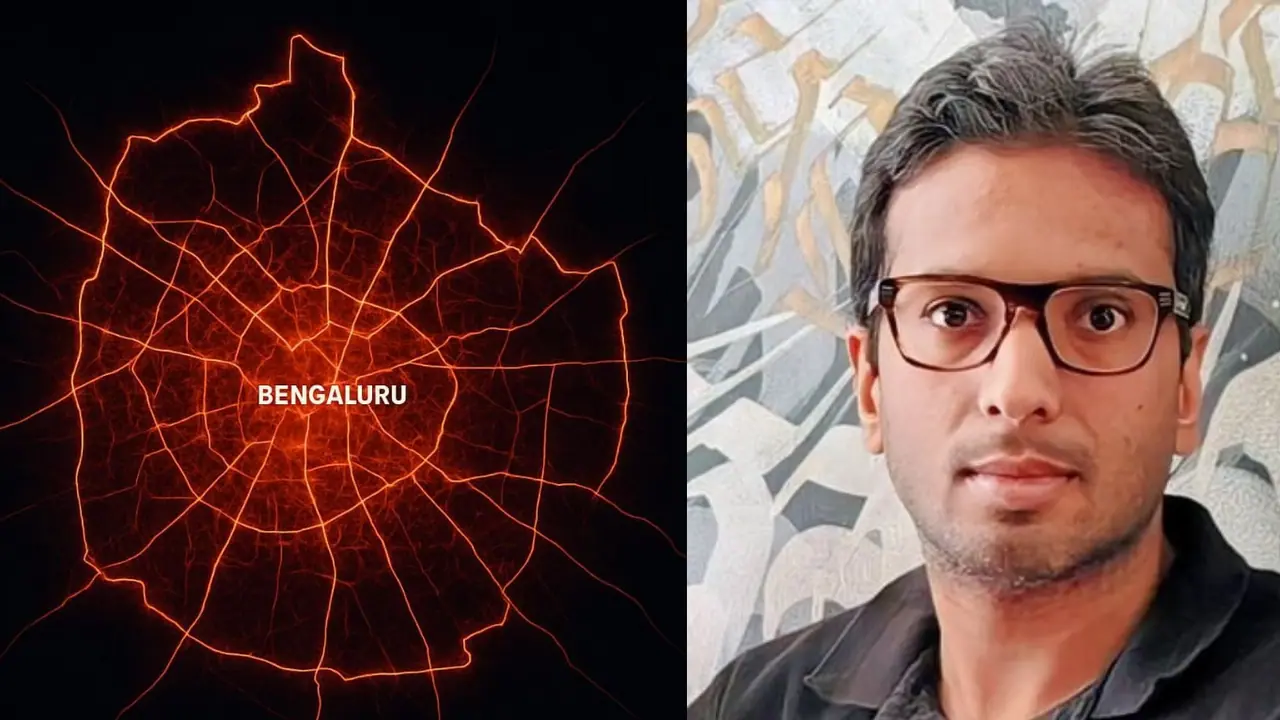EaseMyTrip co-founder Prashant Pitti, after being stuck in Bengaluru traffic for over 100 minutes, pledged ₹1 crore to develop an AI-based solution. He seeks BBMP and BTP support to launch a data-driven project to ease congestion.
Bengaluru: Despite numerous attempts to modernise Bengaluru’s traffic systems using AI and surveillance cameras, the city continues to reel under congestion, bottlenecks, and poor infrastructure design. In a bold and proactive step, EaseMyTrip co-founder Prashant Pitti has pledged ₹1 crore to address the problem using AI-powered traffic analysis and satellite data.

100 Minutes Stuck in Traffic Sparks the Move
Prashant Pitti’s frustration peaked after spending over 100 minutes stuck at a single choke-point near Bengaluru’s Outer Ring Road (ORR) during a late-night commute. The 11-kilometre stretch took him more than 2.15 hours to cover, with no traffic signals or police in sight.
"I was stuck for 100 minutes trying to understand why there’s no signal or cop here," he said.
Rather than adding to the usual Bengaluru traffic memes or rants, Pitti declared, “I don’t want to complain—I want to fix it.”
Announcing AI-Based Traffic Management Plan
Pitti announced that he would leverage Google Maps’ Road Management Insight Tool, launched in April 2025, alongside satellite imagery and AI analytics to identify and solve bottlenecks. His goal is to create a data-driven traffic flow model and help implement smart signal systems in choke-prone zones.
“I’m committing ₹1 crore to find Bengaluru choke-points via Google Maps & AI,” he declared.
Hiring Engineers to Build the Solution
He further mentioned plans to hire AI engineers and partner with civic bodies like BBMP for data access. The aim is not just to create a pilot but potentially deliver a scalable model that can be expanded citywide.
Pitti Sets Condition for Launching Traffic Initiative
Prashant Pitti announced that he will launch this initiative to address Bengaluru's traffic crisis, but only if the Bruhat Bengaluru Mahanagara Palike (BBMP) and Bengaluru Traffic Police (BTP) commit to collaborating. Specifically, he called on the authorities to open their raw data feeds or grant API access and appoint a dedicated team that will act on the insights generated.
“This will only work if they’re willing to work with us. If they do, I’m ready to start immediately,” he added.
“Bengaluru Deserves Better,” Says Pitti
“Bengaluru is the future tech city. Its people deserve better traffic management. Negligence, staff shortages, and road design flaws contribute to the problem. Technology can help alleviate these issues,” he added.
Netizens Applaud Move, Suggest Practical Fixes
Pitti’s initiative sparked widespread discussion online, with many citizens applauding the effort while also offering practical suggestions and voicing concerns. Several users highlighted key issues like poor road design and the lack of proper merging points between infrastructure projects, which often lead to traffic choke points.
Others pointed to a deeper problem: inadequate traffic management knowledge among on-ground personnel, despite leadership awareness.
Some users supported the use of AI and data to identify patterns, while a few skeptics questioned whether city authorities would act on insights they likely already possess.
A few even suggested that Bengaluru’s wealthy residents step in to directly fund and execute such projects without relying on government contractors. Overall, the initiative was seen as a welcome step, though its success may depend heavily on official cooperation and execution.
Bengaluru’s Congestion Crisis Spurs Innovation
As traffic conditions worsen across Bengaluru’s hotspots like ORR, Silk Board, Whitefield, and Hebbal, Pitti’s initiative might serve as a template for public-private partnerships in managing urban congestion. The success of this project could pave the way for data-driven infrastructure planning in other Indian cities too.

